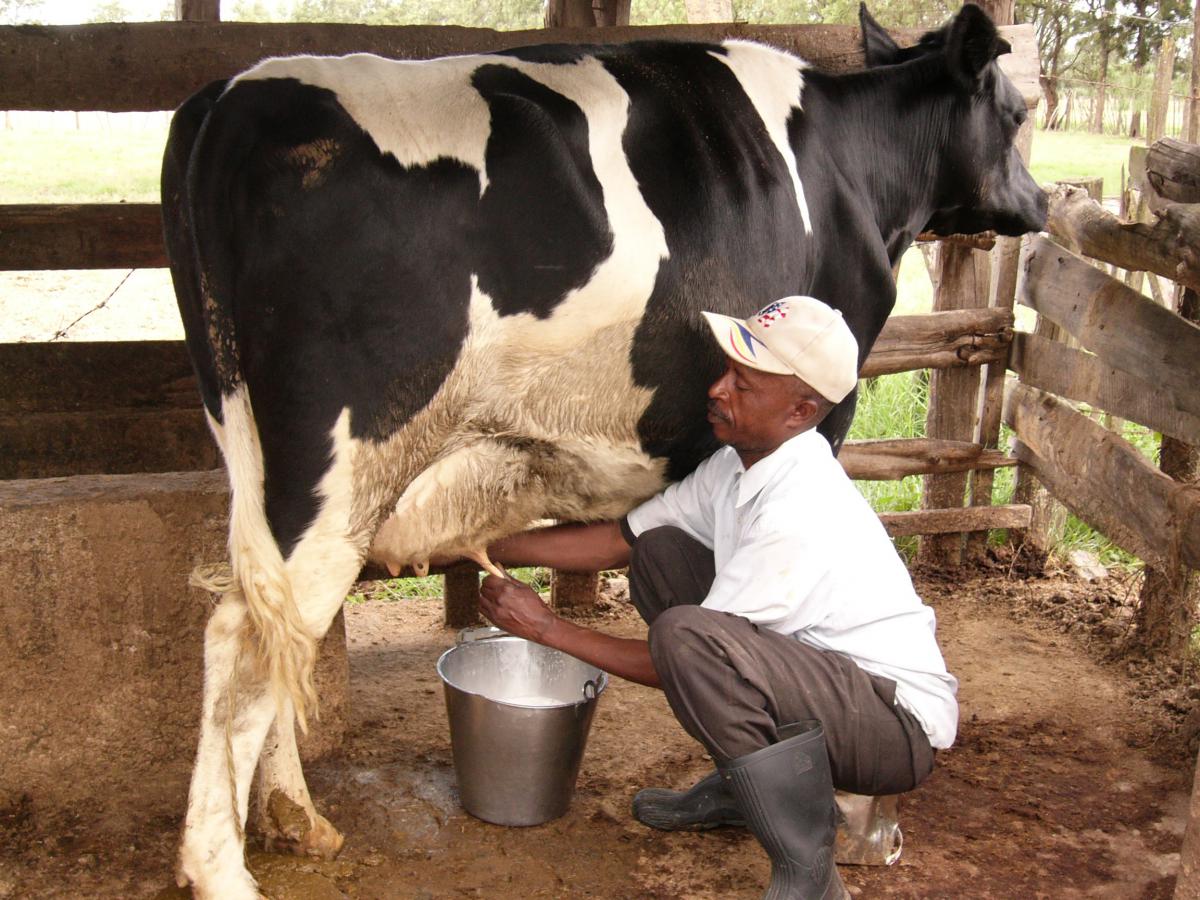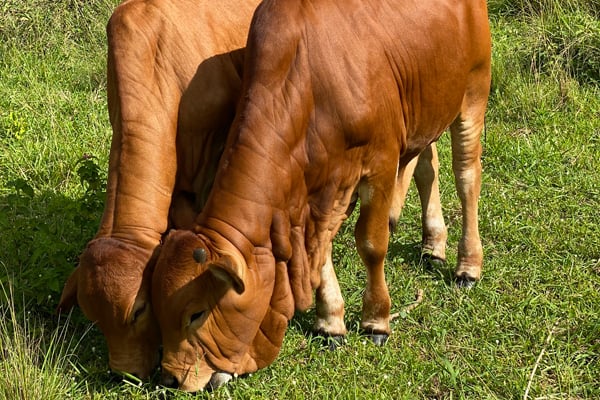How to milk more profits this year

Farmers are advised to milk their cows in the morning and evening. PHOTO/file
What you need to know:
- Practicing zero-grazing will also enable you to earn more money especially in places where farmland is not in abundance. This can be an equaliser as you can earn as much as any other farmer with large tracts of land if you follow the recommended practices.
You can tap a lot of benefits from practising dairy farming. Through dairy farming, you can not only change your family’s financial background but also change the lives of many families that are one way or the other connected to your dairy farm.
Benefits
According to Titus Kasujja, who operates a 400-acre dairy farm in Ziroobwe, practising dairy farming as an income-generating activity will generate revenue for you. Kasujja says your farm will also provide jobs to many youths, veterinary doctors and agro vet shops. “Dairy farming provides farmers with financial security in that in the event of an emergency, you can easily convert your livestock to cash and attend to the emergency,” says Kasujja who together with wife established Ziroobwe Demonstration Farm (Zidefa) in 2016.
Practising zero-grazing will also enable you to earn more money, especially in places where land for farming is not in abundance. This can be an equaliser as you can earn as much as any other farmer with large tracts of land if you follow the recommended practices.
Also, consuming milk from dairy farming improves the nutritional status of your family. This is especially true for children who consume milk. This will enricher their normal diet with lots of protein and calcium which is essential for their growth.
Friesians
This breed is characterised by its black and white short-haired coat and short horns. The main purpose of the Friesian breed is milk production. It has the potential to yield between 40-60 litres of milk daily. This breed has an average body weight of between 500-550 kilogrammes when it gets to the adult stage.
During a recent Seeds of Gold Farm Clinic, Dr Moses Dhikusooka of Mbarara Zonal Agricultural Research and Development Institute (MBAZARDI) tipped farmers to keep the Friesian cow because of its milk.
“The Friesian breed is preferred for its high milk production potential with a low butterfat content of about 3.2 per cent although this will depend on the level of feeding and other management,” says Dr Dhikusooka.
Dr Dhikusooka says that it is however a heavy feeder consuming up to 110 kilogrammes of fresh forage per day. It also consumes a lot of water daily and may not be suitable in places that face water shortages.
Ayrshire
This breed is known for its white and brown patches with some tending towards dark mahogany. An adult Ayrshire has an average live-weight of about 450 kilogrammes. This breed will give you about 30litres of milk with about 4 per cent butterfat content provided you feed and water it well. The Ayrshire adapts well to a wide range of climates and is often preferred by farmers due to its ideal milk properties.
Guernsey
Guernsey is characterised by its white and reddish-brown patches. An adult will weigh around 400-500 kilogrammes. Guernsey heifers come into milk at about two years of age. They are known to have a finely tuned temperament. They are neither nervous nor irritable.

Titus Kasujja keeps more than 400 dairy cattle at his farm in Ziroobwe. PHOTO/file
The Guernsey bull has an attractive personality with ample vigour and masculinity. It has smooth-blending shoulders showing good refinement, strength, and contour. This breed has a high milk production potential of about 25 litres per day. Its milk has a moderate butterfat content of 4.3 per cent. It requires between 65 and 85 kilogrammes of fresh forage per day for optimum milk production.
Jersey
The Jerseys are light brown with protruding eyes. They may also have white patches that may cover much of the animal. They have a smaller body size compared to other breeds. Jersey has an average weight of about 350 kilogrammes. This breed has a moderate milk production potential of about 20litres daily with 5.3 per cent butterfat content. This is dependent on your feeding and management regime. This breed has a reputation for milk with high quality; rich in protein, minerals, and trace elements than those from the larger dairy breeds. They require about 65-85 kilogrammes of fresh forage.
Ankole
The Ankole-Watusi is a modern breed of domestic cattle. It derives from the Ankole group of Sanga cattle breeds. It is characterised by very large horns.
Zebu
A zebu, sometimes known as indicine cattle or humped cattle, is a species or subspecies of domestic cattle originating in South Asia. Zebu are characterised by a fatty hump on their shoulders, a large dewlap, and sometimes drooping ears.
Dairy cow housing
For optimal milk production, you will need to protect your cows from extreme weather such as harsh rain and direct sunlight. “The place you house your cows should also be free of mud and stagnant water and be easy to clean. This is essential in the prevention of the spread of diseases such as hoof infection,” says Titus Kasujja.
The type of structure you will choose to construct will depend on the climatic conditions in your region and also on the cost you will be willing to foot. If you are starting and you are low on capital, do not worry. Even with a simple structure and as long as you follow the recommended guidelines, you can still be a successful dairy farmer as you slowly improve your structures.
Calf housing
Calves are housed to protect them from adverse weather conditions and predators. Calf housing is also important in controlling parasites and ensures proper feeding and management of each calf. A calf pen can be constructed from locally available materials. It should:
Allow a two square metres space for each calf.
Be well-drained and easy to clean and if possible, raised by 1ft.
Be well lit with natural light.
Be well ventilated and strong enough to stand predator invasion.
Calves should be housed preferably as individuals during their first month of life. If not possible, you can house them in a group. Take care to ensure calves housed in groups do not fight or suckle each other.
The recommended minimum internal dimensions for an individual calf pen are 1.2 by 1m.
Three sides of the pens should be constricted to prevent contact with other calves. The front of the pen should be constructed to allow the calf to be fed milk, concentrates, and water.
Heifer housing
When considering housing for heifers, you should consider the following factors:
Your ease of feeding the cows. Build structures to enable you to feed from outside as it will minimise your risk of injuries.

The structure should be easy to clean or replace beddings.
Heifers go through management that requires restraint. The structure you construct should meet your cows’ requirements and make it easy to handle them.
For mature cows in a medium or large scale dairy unit, you may need to include the following facilities:
Resting area for cows which should be a paved shade. You can pave it using concrete or sawdust which should be changed daily. If you are on a tight budget, an open area with trees for shade will do. Also, always allow for space for exercise and movement.
A feeding trough made of wood, concrete, or plastic.
You should construct the tough in such a way that there is minimal wastage of feeds as the cow eats.
A milking area where calfs and the milker can access easily.
The milking area should also have a feeding trough to allow the cow to feed as it is milked.
A store for feed storage. Ensure that the feeds are protected from harsh sunlight and moisture as it will lose quality if poorly stored.
Also, an isolation pen will be of an added advantage to isolate sick animals. This is very essential in curbing the spread of diseases. A slurry pit to store the cows’ droppings before it is decomposed and ready for use as organic manure.
When constructing, you should allow for provisions for expansion.
Dehorning
How to dehorn
This is the process of cutting off the horns of the calves. You should dehorn your cows when they are still calves to promote faster healing of your animals. Horned cows are dangerous to both the people working with the animals and other animals within the herd. There are two main ways to dehorn your calves.
Some of the methods include using a hot iron rod to press against the horn bud and using a saw or hand blade (surgical method) to cut off the horn.
- Additional reporting value.co.ke




